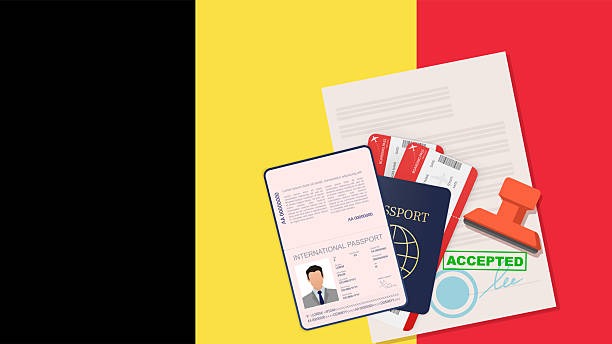Blog
Lost Your Belgian ID Card? Here’s Exactly What to Do Next
Lost Your Belgian ID Card? Here’s Exactly What to Do Next
Lost Your Belgian ID Card? Here’s Exactly What to Do Next. Losing your Belgian ID card can be stressful, especially when you consider how essential it is for identification, travel within the EU, banking, and even accessing public services. Whether it was misplaced, stolen, or accidentally damaged, acting quickly and following the right procedures is crucial. This comprehensive guide explains what to do if you lose your Belgian ID card, how to get a replacement, and what preventive measures you can take to protect yourself in the future.

1. Why Your Belgian ID Card Is So Important
Your Belgian ID card (also known as the eID) is more than just an identification document. It serves multiple purposes:
-
Proof of Identity: Required for most administrative and legal processes.
-
Travel Document: Allows visa-free travel within the European Union, Schengen Area, and certain neighboring countries.
-
Digital Access: Provides access to online government services through digital authentication.
-
Banking and Employment: Often necessary for opening bank accounts, signing contracts, or verifying identity at work.
Because your ID card is directly tied to your personal data, losing it can expose you to potential identity theft or fraud, making prompt action essential.
2. Report the Loss or Theft Immediately
The first and most important step after losing your Belgian ID card is to report it immediately. This helps prevent misuse and initiates the process for getting a replacement.
If Your ID Card Was Lost:
-
Contact DOC STOP:
Call DOC STOP at 00800 2123 2123 (free of charge, available 24/7).
This will automatically block your ID card’s chip, preventing unauthorized digital use.
If Your ID Card Was Stolen:
-
Report the Theft to the Local Police:
Go to the nearest police station and file an official theft report.
The police will provide a document confirming the theft, which you will need when applying for a new card.
After reporting, your old card will be invalidated, meaning it can no longer be used for identification or electronic access.
3. Apply for a New Belgian ID Card
Once you’ve reported the loss or theft, you’ll need to apply for a replacement as soon as possible.
If You Are in Belgium:
-
Visit your local municipal office (commune/gemeente).
-
Bring the following documents:
-
Proof of identity (passport or another recognized document)
-
Police report (if applicable)
-
Passport-sized photo (must meet biometric standards)
-
-
You’ll receive a temporary document that serves as proof of identity until your new card arrives.
If You Are Abroad:
-
Report the loss or theft to the local police in the country where it occurred.
-
Contact the nearest Belgian embassy or consulate.
-
They can issue a provisional identity document or help you apply for a replacement ID card to be collected when ready.
The processing time usually takes between 7 to 15 working days, but this can vary depending on your location.
4. Monitor Your Identity and Prevent Fraud
Once your card is lost or stolen, you must stay alert to prevent identity misuse.
Here’s what you should do:
-
Monitor Your Bank Accounts: Keep an eye out for unusual transactions.
-
Check for Suspicious Mail or Calls: Scammers may use your details to apply for loans or services.
-
Use a Credit Monitoring Service: Consider signing up for a credit protection service to detect potential identity fraud early.
-
Update Online Accounts: Change passwords on sensitive platforms that may have used your eID for verification.
Belgian authorities take identity protection seriously, but vigilance is your best defense.
5. Get Your New ID Card Activated
When your new Belgian ID card is ready, you’ll be notified by your municipal office. You’ll need to collect it in person.
During pickup:
-
Bring the temporary identity document or receipt you received earlier.
-
Activate your PIN and PUK codes, which are essential for the card’s digital features.
-
Make sure your biometric data (photo and fingerprints) are correct before signing the receipt.
Once activated, your new card will restore your full identity and digital access rights.
6. Protect Your ID Card in the Future
Prevention is always better than cure. To avoid future stress, follow these tips to safeguard your Belgian ID card:
- Keep it in a secure holder to protect against physical damage.
- Avoid carrying it unnecessarily—only take it when you need it.
- Make a digital backup of the serial number and issue date for reference.
- Enable DOC STOP alerts for quick blocking if your card is ever misplaced again.
- Store contact details of DOC STOP and your municipal office on your phone.
Taking these small steps ensures your identity remains secure at all times.
Cost of Replacing a Lost Belgian ID Card
The cost of replacing your ID card depends on where and how you apply. As of 2025:
-
Standard processing: Around €20–€25.
-
Urgent processing: May cost up to €120, with delivery within 1–3 working days.
If you’re abroad, fees may differ depending on embassy regulations and courier charges.
What Happens If You Don’t Report It?
Failing to report a lost or stolen ID card can lead to serious issues, including:
-
Unauthorized use of your identity for financial or criminal purposes.
-
Difficulty accessing public services or proving your identity.
-
Administrative penalties, as it’s your legal duty to report such incidents promptly.
Taking action immediately helps protect your rights and ensures a smoother recovery process.
Final Thoughts: Stay Calm, Act Fast, and Protect Your Identity
Losing your Belgian ID card may seem overwhelming, but the process for replacement is straightforward if you act promptly. Start by blocking the card, reporting to authorities, and applying for a new one. Meanwhile, stay alert for any suspicious activity that might suggest identity misuse.
Your Belgian eID is a vital part of your digital and physical identity—treat it with care and vigilance. By following these steps, you’ll not only recover your lost card efficiently but also ensure your personal security and peace of mind.

